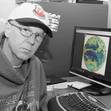Evocative settings
“…his beautifully descriptive words that expertly paint a picture of the Idaho wilderness.”
“I grew up in the Northwest, and his descriptions of the areas the novel traverses are spot on.”
“…the author’s deft hand at describing the Idaho wilderness…”
The above quotes are from the few early reviews of The Switch. Setting is really important to my stories (to all stories); I’ve worked hard to reach the happy compromise of telling enough, but not too much. Some authors poetically describe landscapes or cityscapes, and their descriptive passages narratively wax on for paragraphs or even pages. Others give sparse descriptions, leaving the reader to mostly fill in the blanks. My strategy is to find that middle ground and let the reader conjure up the scene with enough tidbits of information to place them there. Of course, for someone who has been to central Idaho or any wilderness area in the West, the work of placing them in the environment is easy. But it’s not enough to put someone there. I have to strike a mood effected partially by the environment and let the readers feel it from the characters’ experiences. In The Switch, the Idaho wilderness, at least to Macy, is lonely and cold, but spectacularly beautiful at the same time. The remoteness is both exciting, yet for a woman surrounded by five million people at home, there is also a sense of uneasiness, even danger. Early on back in DFW, when she sits in the heat and humidity at a cafe table waiting on her friend, she is irritated and has little patience for the crowd around her. Most anyone from Texas or the southeast can imagine that. 



